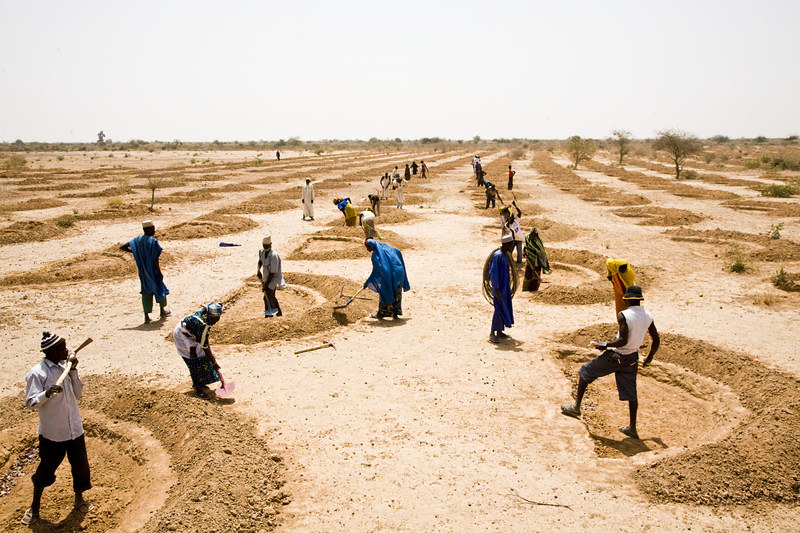Building back better: unique challenges for LDCs

Discussions on recovering from the Covid-19 pandemic frequently focus on ‘building back better’. In a recent webinar hosted by the International Institute for Environment and Development (IIED), IIED researchers and LDC representatives examined the range of issues LDCs have to deal with in their efforts to build back better.
Speakers noted LDCs are already dealing with multiple shocks from climate and Covid-19-related impacts, and argued that mobilising resources for equitable, green and resilient recoveries from the pandemic will be critical.
IIED Director Andrew Norton opened the event, noting that as the Paris Agreement moves into post-2020 implementation, harnessing all the levers of both national implementation and global decision-making will be vital to build back better from Covid-19 and put the world on track to achieve the ambitious target of limiting overall global warming to 1.5 degrees.
Tackling Covid-19 and the climate crisis in tandem
Sonam P Wangdi, Chair of the Least Developed Countries Group under the UNFCCC, described LDC populations as “particularly vulnerable and disproportionately impacted” by both Covid-19 and the climate crisis, both of which are exacerbating existing challenges and setting back sustainable development efforts.
He flagged LDCs’ Covid-19 recovery as both critical to sustainable development, and a collective effort: “How we and the world recover in this moment will determine our course for the future.”
“Together as a global community we can seize the moment to drive climate action and reset onto more sustainable paths, or we can slip in the other direction, deepening inequalities and moving further away from achieving the goals of the Paris Agreement and the sustainable development agenda.”
His Excellency called for tandem efforts to tackle the Covid-19 pandemic and the climate crisis, arguing that we cannot wait for one crisis to subside before turning to another.
“Recovery plans for Covid-19 that set the world back in realising the goals of the Paris Agreement and the SDGs cannot be considered recovery plans,” he argued.
“Addressing one crisis by fuelling another is no way to recovery – it is a path to further devastation.”
What does COP26 success look like?
Isatou F. Camara, principal development planner in the Directorate of Development Planning of the Ministry of Finance and Economic Affairs, The Gambia, outlined three priorities for a successful COP26 that would help LDCs build back better:
- Commitment to increased and stronger climate ambitions from all countries, especially developed countries;
- Genuine and unwavering commitment by developed countries to mobilise and provide the necessary, long term climate finance to enable developing countries, especially LDCs, to build resilience – allowing them to reduce their debt burdens and providing the fiscal space for developing countries to pursue green recoveries; and
- Conclusion of the ‘rulebook’ for Article 6 of the Paris Agreement (specifically, on the outstanding rules governing international carbon markets under the Paris Agreement, which remain undecided). Negotiations on this issue have dragged on without agreement at the past two COPs, but Ms Camara called for a “breakthrough” in reaching agreement at Glasgow.
Anna Schulz, principal researcher in IIED’s Climate Change research group, said it would be critical for the COP outcomes to create bridges between countries’ NDCs (which cover 5-year periods) and long-term strategies for emissions reduction (to 2050). She argued this is the only way to keep 1.5 degrees alive.
As a practical measure, she called for Parties to submit long term strategies, which the Paris Agreement currently requires them to submit by 2020 – but many are still to do so (at the time of writing, 17 countries outside the EU had submitted long term strategies, plus the EU and several of its member states independently).
She also echoed Ms Camara’s call for a reaffirmation and delivery of climate finance commitments, calling this “absolutely critical” for LDCs, who often do not have the capacity to deliver large-scale fiscal stimulus. As part of this she called for the COP26 outcomes to encourage innovative financing mechanisms, such as debt-for-nature or debt-for-climate swaps.
Nature-based solutions for Covid-19 recovery and resilience
While nature-based solutions (NBS) terminology has only recently become widely used, LDCs have already been showing leadership in using nature to tackle interlinked challenges. Seven LDC countries have already signed up to the Leaders’ Pledge for Nature, which seeks to reverse biodiversity loss by 2030.
Xiaoting Hou-Jones, senior researcher in IIED’s Natural Resources research group, argued there was much to learn from the experiences of LDCs for how to drive green recoveries, noting many LDCs have included NBS in NDCs, across diverse landscapes and geographies.
She commented: “The evidence we have seen from existing LDC experiences builds a very strong case for any green recovery plan to tackle climate change, nature loss, poverty and inequality together.”
“If they want to bring transformative change, green recovery plans must put local community in the driving seat and empower them to work with nature to diversify livelihoods and build back better.”
Priority areas of action for a green, resilient recovery
There was consensus among speakers that business as usual cannot continue if the world is to move towards an equitable, green, resilient recovery.
Ritu Bharadwaj, senior researcher in IIED’s Climate Change research group, described three key factors essential to delivering the transformative pathway to recovery that is needed:
- Building and strengthening social protection programmes – arguing that, if well designed and delivered effectively, these programmes can shape pathways for improving countries’ productive capacities, reducing inequalities and building resilience;
- Protect income and minimise income losses for informal workers, who constitute the bulk of the labour force in LDCs; and
- Protecting livelihoods and preserving the viability of enterprises, reducing reliance on stimulus measures as a reactive response, and instead focus on building long-term resilience.
You can watch the full recording of the event on YouTube here.
Image (above): cash for work to create climate resilience in Niger (courtesy Oxfam).